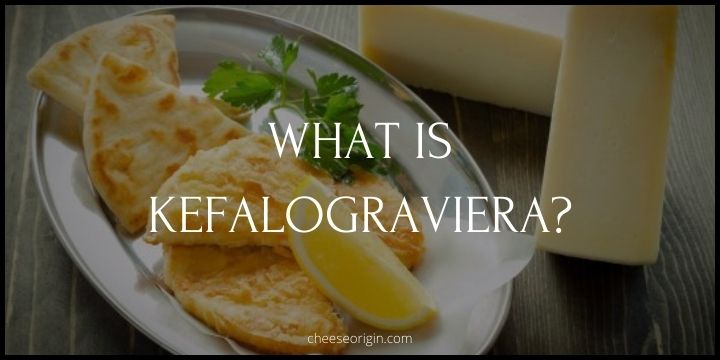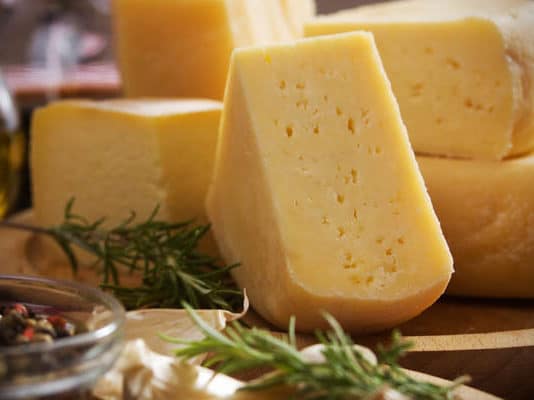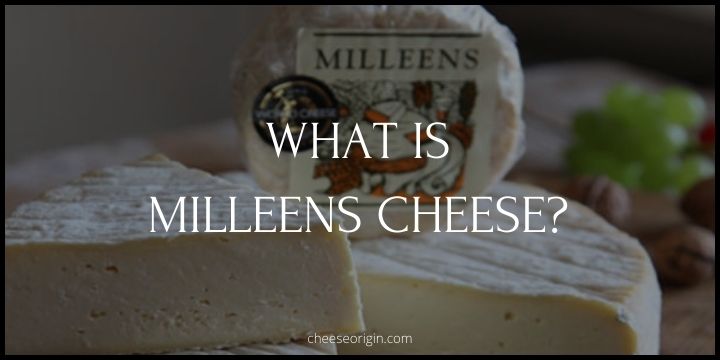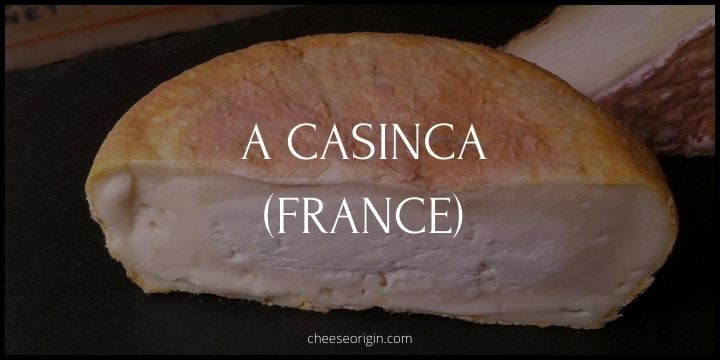What is Kefalograviera? A Greek Cheese with a Royal Taste

Get ready to embark on a culinary journey to the heart of Greece, because today we are introducing Kefalograviera – a cheese that’s nothing short of regal. With its rich, complex flavor profile and a texture that dances between firm and creamy, this cheese is a true Greek gem.
From the first bite, you’ll understand why Kefalograviera is often referred to as the ‘cheese with a royal taste’. It’s not just a cheese, it’s an experience, a piece of Greek heritage that has been masterfully crafted to delight your palate.
Quick Facts About Kefalograviera
| Fact | Details |
|---|---|
| Origin | Greece |
| Made from | Sheep’s or goat’s milk, sometimes a mix of both |
| Texture | Hard and springy |
| Color | Pale yellow |
| Flavor | Nutty, slightly salty, with a hint of sweetness |
| Aroma | Pleasantly strong, similar to aged cheese |
| Fat content | Approx. 38% |
| Maturation period | 3 to 6 months |
| Cooking uses | Ideal for grating, frying (as in Saganaki), or baking |
| Pairings | Pairs well with red wines, fruits like pears, and crusty bread |
| Substitutes | Kefalotyri, Graviera, Pecorino Romano |
| Nutrition | High in protein and calcium, but also high in fat and sodium |
| PDO Status | Protected Designation of Origin (PDO) since 1996 |
| Availability | Available year-round, but quality is best from November to May |
What is Kefalograviera?

Kefalograviera, a word that might initially twist your tongue, is a culinary delight that will certainly tantalize your taste buds. Hailing from the sun-soaked landscapes of Greece, Kefalograviera (Κεφαλογραβιέρα), pronounced keh-fah-lo-grahv-YAIR-ah, is a hard table cheese with a rich tradition and a unique, savory flavor.
Made primarily from sheep’s milk or a mixture of sheep’s and goat’s milk, Kefalograviera is a popular choice in Greek cuisine. It’s a young yet distinguished member of the Greek cheese family, known for its full-bodied yet pleasant aroma and its golden-yellow hue.
The cheese gets its intriguing name from two other iconic Greek cheeses – Kefalotyri and Graviera. Kefalograviera successfully marries the intense, piquant flavor of traditional Kefalotyri with the hard texture of Graviera. The result? A cheese that’s not just delectable but also versatile, finding its place in everything from appetizers to main courses.
Despite being similar to Kefalotyri, Kefalograviera is slightly softer and less salty. This balanced profile makes it the perfect medium between Kasseri, Graviera, and Kefalotiri, offering a unique taste experience that’s hard to forget.
It’s no surprise then that Kefalograviera enjoys the status of a PDO (Protected Designation of Origin) product in Greece. Primarily produced in Western Macedonia, this cheese is a testament to the region’s rich dairy traditions and the artisanal skills of local cheesemakers.
So, the next time you’re exploring the world of cheese, remember to give Kefalograviera a try. Its unique blend of flavors and textures is sure to leave you craving for more.
Kefalograviera Tasting Notes
- Texture: Kefalograviera has a hard and compact texture, yet it’s also slightly springy to the touch. It’s firm without being overly dense, offering a satisfying mouthfeel when eaten.
- Color: The cheese boasts a beautiful pale to golden-yellow color, a visual testament to its rich and robust flavor profile.
- Aroma: Kefalograviera has a pleasantly strong aroma that is reminiscent of aged cheese. The scent is inviting, with hints of nuttiness and the distinct notes of sheep’s milk.
- Flavor: Its flavor is robust and full-bodied, with a delightful balance between saltiness and sweetness. There’s an inherent nuttiness to Kefalograviera, accompanied by subtle hints of caramel and a slight tanginess that adds complexity to the overall taste.
- Aftertaste: The aftertaste of Kefalograviera lingers on the palate, with its nutty and subtly sweet flavors leaving a lasting impression.
- Pairings: Kefalograviera pairs wonderfully with many elements. Its robust flavor stands up well to full-bodied red wines. It also complements fruits like pears and apples, as their sweetness balances the cheese’s saltiness. Additionally, crusty bread or crackers serve as great vehicles for this cheese.
What is Kefalograviera Used For?

- Frying: Kefalograviera is famously used in the traditional Greek dish called Saganaki. The cheese is lightly dusted with flour and then fried until it’s golden and crispy on the outside but soft and melty on the inside.
- Baking: This cheese can be baked into various dishes due to its ability to hold its shape under heat. It can be added to casseroles, gratins, or pies for a deliciously cheesy flavor and texture.
- Grating: Kefalograviera is hard enough to be grated over pasta, risotto, or salads, adding a rich and full-bodied flavor to these dishes.
- Snacking: It can be enjoyed as a standalone snack, often accompanied by a glass of red wine, fruits, or crusty bread.
- Appetizers: In Greek cuisine, Kefalograviera is often served as part of a meze platter, a collection of small dishes served to accompany alcoholic drinks.
- Sandwiches: Kefalograviera can be sliced and used in sandwiches, providing a robust flavor that pairs well with a variety of fillings.
- Pizza Topping: Due to its excellent melting properties, Kefalograviera can be used as a topping on pizzas, giving them a unique and tasty twist.
- Desserts: Despite its savory profile, Kefalograviera can also be used in desserts. When paired with honey or sweet jams, the cheese’s saltiness creates a delightful contrast.
What is Kefalograviera Made of?
| Ingredient | Description |
|---|---|
| Sheep’s Milk | The primary ingredient in Kefalograviera. Sheep’s milk gives the cheese its robust and full-bodied flavor. It also contributes to the cheese’s firm and slightly springy texture. |
| Goat’s Milk | Some versions of Kefalograviera blend sheep’s milk with a portion of goat’s milk. This adds complexity to the flavor profile and enhances the cheese’s rich aroma. |
| Rennet | This is an essential ingredient in cheesemaking. Rennet, which can be animal-based or vegetarian, helps coagulate the milk, forming curds that are then processed into cheese. |
| Salt | Salt is added for flavor and also acts as a preservative. It helps balance the inherent sweetness of the milk, resulting in Kefalograviera’s distinctive salty-sweet taste. |
| Cheese Cultures | These are specific types of bacteria added to the milk during the cheesemaking process. The cultures ferment the lactose in the milk, producing lactic acid. This process helps develop the cheese’s unique flavor and texture. |
| P. roqueforti | Penicillium roqueforti is a type of mold sometimes used in the production of Kefalograviera. It lends a slightly spicy note to the cheese’s flavor profile. |
10 Best Kefalograviera Substitutes
| Substitute | Description |
|---|---|
| Kasseri | This is a Greek cheese that melts well and has a slightly tangy flavor which makes it a good substitute for Kefalograviera in recipes like saganaki. |
| Halloumi | A Cypriot semi-hard cheese known for its high melting point, making it suitable for grilling or frying. It’s less salty than Kefalograviera but offers a similar texture. |
| Pecorino Romano | An Italian cheese made from sheep’s milk. It’s salty with a hard texture, making it an excellent alternative for grating over dishes. |
| Manchego | This Spanish cheese is made from sheep’s milk and aged for several months. It shares a similar nutty flavor profile with Kefalograviera. |
| Gruyère | A Swiss cheese that melts beautifully and has a slightly sweet and nutty flavor. It’s a great substitute in baked dishes. |
| Emmental | Known for its distinctive holes, this Swiss cheese is mildly nutty and savory. It can be used as a substitute in both cooked and raw dishes. |
| Provolone | This Italian cheese has a smooth texture and mild flavor. It melts well, making it suitable for pizzas and baked dishes. |
| Gouda | A Dutch cheese that’s creamy with a sweet and mild flavor. It can replace Kefalograviera in sandwiches or cheese platters. |
| Asiago | An Italian cheese that can range from smooth and creamy to crumbly and sharp depending on its age. It’s a versatile substitute that works in a variety of dishes. |
| Parmesan | A hard, granular cheese with a rich, sharp flavor. It’s excellent for grating over dishes where you’d typically use Kefalograviera. |
What Pairs Well With Kefalograviera?

Food that goes well with Kefalograviera:
| Category | Food Items |
|---|---|
| Meat | Lamb, particularly in a spiced sauce with coriander, fennel, cinnamon, cumin, rosemary, and thyme. |
| Pasta | Greek pasta dishes often use Kefalograviera as a topping, such as the Greek lamb pasta. |
| Appetizers | Saganaki, a pan-seared Greek cheese appetizer, traditionally uses Kefalograviera. It’s also a great addition to a meze (appetizer) platter. |
| Seafood | Fried seafood pairs well with Kefalograviera, especially when served with Assyrtiko wine. |
| Vegetables | Fried vegetables, from tempura to pané, can be elevated with a side of Kefalograviera. |
| Snacks | Kefalograviera is a salty snackable cheese, perfect with crackers or fruit. It’s just as addictive eaten alone. |
Also read: What Fruit Goes on a Charcuterie Board?
Beverage that goes well with Kefalograviera:
| Category | Beverage |
|---|---|
| Wines | Assyrtiko (a dry white wine from Greece), Xinomavro (a robust red wine from Greece), or any medium-bodied red or white wine. |
| Beers | Craft beers with a medium body and moderate bitterness, such as IPAs (India Pale Ales) or amber ales. |
| Spirits | Ouzo, an anise-flavored spirit from Greece, or Metaxa, a Greek brandy. |
| Non-Alcoholic | Sparkling water or iced tea with lemon. These beverages can cleanse the palate between bites of this rich cheese. |
Also read: Best Wine and Cheese Pairings: The Ultimate Guide
Also read:
- What is Rogue River Blue? America’s Award-Winning Cheese
- What is Saganaki? The Greek Culinary Star
- What is Cheddar Jack? The Art of Cheese Blending
- What is String Cheese? Everything You Need to Know
- What is Chihuahua Cheese? Mexican Cuisine’s Best Kept Secret
- What is Buche de Chevre? A French Culinary Treasure
- What is Fromage Frais? A French Culinary Gem Explained





